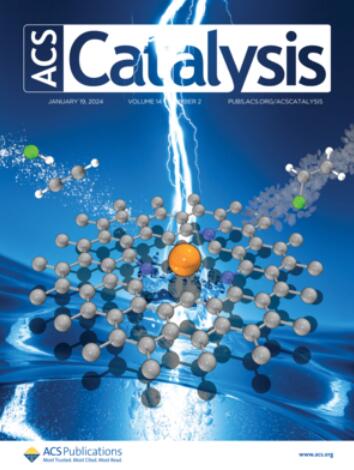富含缺陷的桦褐铁矿超薄纳米片阵列与铁-hytate复合物可在工业级电流密度下实现高效持久的海水氧化作用
IF 11.3
1区 化学
Q1 CHEMISTRY, PHYSICAL
引用次数: 0
摘要
本文章由计算机程序翻译,如有差异,请以英文原文为准。

Defect-rich Birnessite Ultrathin Nanosheet Array Armed with Fe-Phytate Complex Enables Boosted and Long-Lasting Seawater Oxidation at Industrial-Level Current Density
Seawater electrolysis is appealing for mass production of high-purity H2, yet it remains challenging in engineering an efficient and robust oxygen evolution reaction (OER) anode to avoid undesired chloride oxidation reactions and resist chloride corrosion. Herein, we report a multilayered electrode with a Fe-phytate (Fe-PA) complex armor capped on the defect-rich Ni-doped δ-MnO2 ultrathin nanosheet array aligned on 3D macroporous Ni foam for boosted and sustained seawater oxidation at an industrial-level current density. From comprehensive experimental and theoretical investigations, the integration of the defect-rich Ni-MnO2 ultrathin nanosheet array configuration with a surface Fe-PA modification can provide abundant catalytic sites featuring an optimized electronic structure to promote the rate-determining step of *OH deprotonation to inherently boost the OER, and meanwhile impart superhydrophilicity and quasi-superaerophobicity to accelerate electrolyte infiltration and bubble detachment for facilitated mass transport. Impressively, the multilayered architecture comprising an inherently anticorrosive δ-MnO2 core and Fe-PA complex armor could cooperatively contribute to promoting corrosion resistance via effective chloride repelling. This work opens up a promising avenue for constructing MnO2-based materials toward promoted and long-lasting seawater oxidation via geometric and electronic modulation, which represents a significant step in advancing seawater electrolysis technology.
求助全文
通过发布文献求助,成功后即可免费获取论文全文。
去求助
来源期刊

ACS Catalysis
CHEMISTRY, PHYSICAL-
CiteScore
20.80
自引率
6.20%
发文量
1253
审稿时长
1.5 months
期刊介绍:
ACS Catalysis is an esteemed journal that publishes original research in the fields of heterogeneous catalysis, molecular catalysis, and biocatalysis. It offers broad coverage across diverse areas such as life sciences, organometallics and synthesis, photochemistry and electrochemistry, drug discovery and synthesis, materials science, environmental protection, polymer discovery and synthesis, and energy and fuels.
The scope of the journal is to showcase innovative work in various aspects of catalysis. This includes new reactions and novel synthetic approaches utilizing known catalysts, the discovery or modification of new catalysts, elucidation of catalytic mechanisms through cutting-edge investigations, practical enhancements of existing processes, as well as conceptual advances in the field. Contributions to ACS Catalysis can encompass both experimental and theoretical research focused on catalytic molecules, macromolecules, and materials that exhibit catalytic turnover.
 求助内容:
求助内容: 应助结果提醒方式:
应助结果提醒方式:


